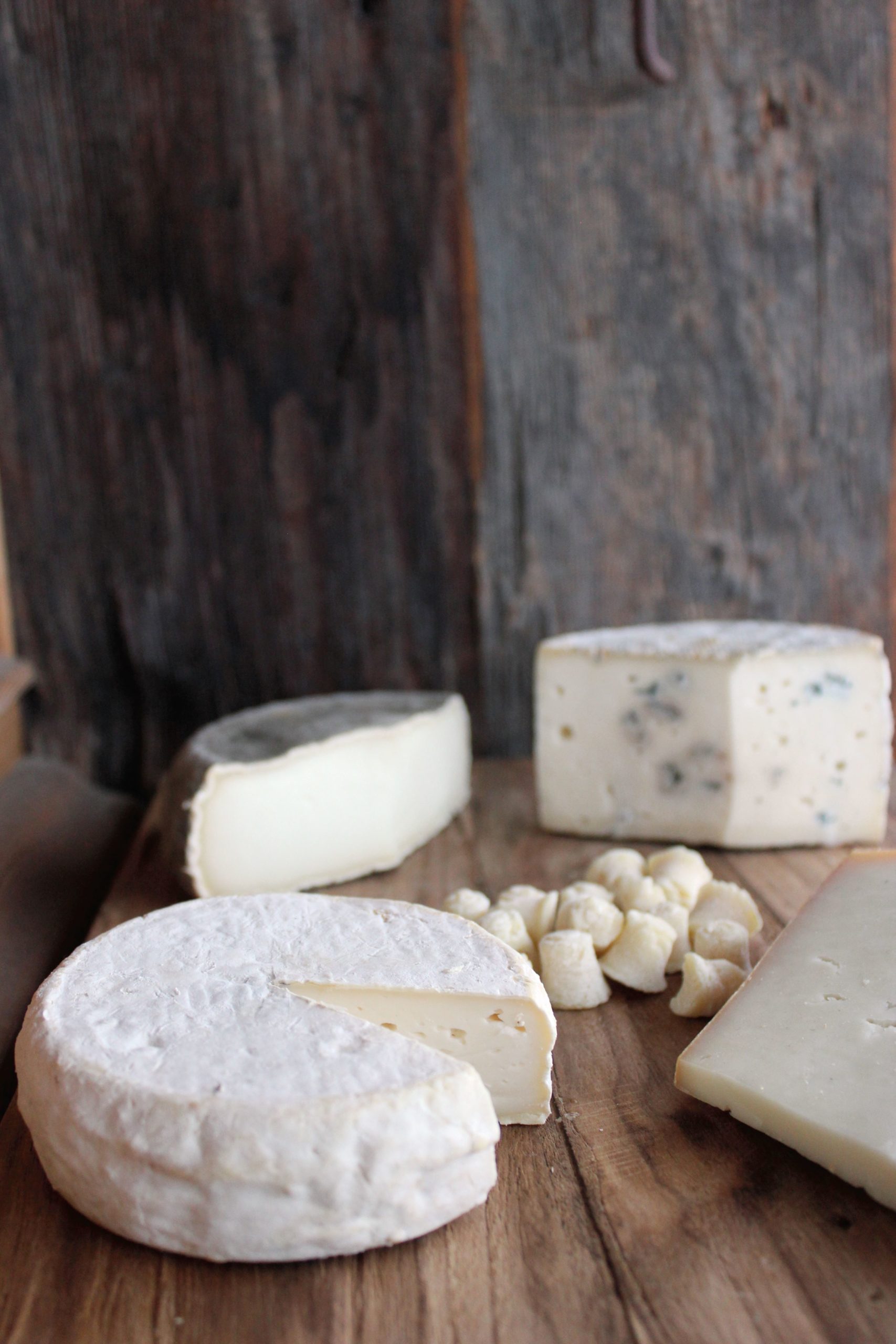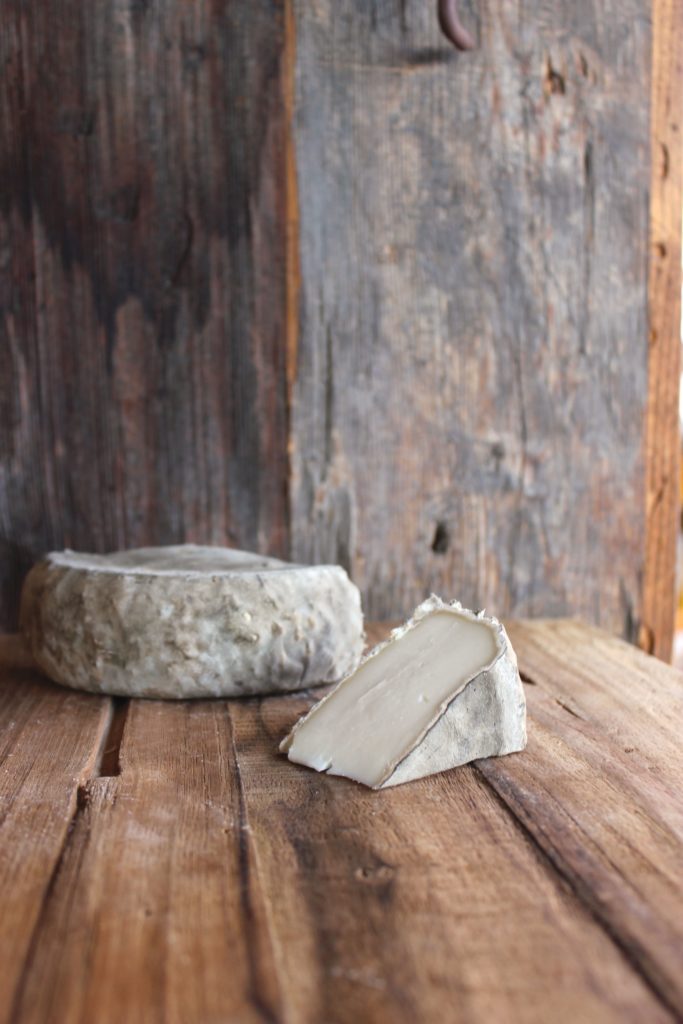
Photographed by Molly McDonough
While giant cow’s milk wheels have taken center stage throughout history as the Savoie region’s most iconic cheeses, goat’s milk cheese has always been there, too, ducking the spotlight. Now, Savoyard goat cheese is coming into its own. A growing number of creative producers are turning out the firm and flavor-rich cheeses once only enjoyed on the farmstead.
Traditionally, dairy farms in the Savoie have delivered their cow’s milk to processors, or fruitières, to be transformed into cheese: the Beaufort, Reblochon, Abondance, and others for which the region is known. But each household would also have a little herd of goats, whose milk and meat helped feed the family.
“The goats maintained the pasture, the space, and the environment,” remembers Dominique Joulot, one of the owners of the cooperative Chèvrerie Ferme des Cabrettes in Sallanches. “Plus they’d fatten up, we’d make a bit of cheese to eat, and then they’d end up at the butcher; voilà.”
France’s most famous goat cheeses tend to be lactic acid–coagulated types, such as Bûcheron and crottin, sold fresh or lightly aged with bloomy rinds. The slow coagulation process, which relies on the action of bacteria converting lactose into lactic acid, creates a weak-structured curd that’s left to drain without pressing. This results in the white, delicately textured cheese most familiar to US consumers as chèvre.
But mountain environments yield mountain cheeses: Harder and firmer, they can age for longer in a place where dramatic seasonal changes necessitate preservation. In Savoie, goat’s milk cheeses have instead been produced like most cow’s milk cheeses: coagulated using rennet to form a denser curd, then pressed and aged. It’s hard not to compare these goat’s milk cheeses to their cow’s milk counterparts. Goat’s milk Chevrotin is a flattened disc with a smooth, lightly pink and dusty white surface, like a smaller cow’s milk Reblochon. And it’s produced in almost the same way: rennet coagulated, pressed, washed daily for a week in a special brine, then sent to an affineur for further cave aging.
But Joulot insists that Chevrotin, withna two-hundred-year history and its own Appellation d’Origine Contrôlée (AOC), can’t be considered simply a goat’s milk copy of Reblochon. The difference, he says, is in the milk. “Goat’s milk is rich in minerals and less fatty; it’s more perfumed. It’s more delicate because the goats eat only the top of the plant, which is the most tender. And that’s reflected in the milk, in the cheese.”
Yet at 100 tons per year, production of Chevrotin remains small compared to the 15,000 tons of Reblochon made annually in Savoie. It’s evidence of how recently these cheeses have been commercialized and how small the industry still is.
In Savoie the cow’s milk industry has long benefited from strong organization along the supply chain: Milk from small farms was pooled at the fruitière, transformed into cheeses, and collectively commercialized. Goat’s milk, by contrast, rested in individual households until fairly recently, when entrepreneurs such as Ferme des Cabrettes co-founder Denis Ballet-Baz realized that there might be an untapped market to exploit. He stopped raising cows altogether in 1986, bought his parents’ farm, and moved in to expand his small herd of chèvres. Since then goat’s milk cheeses, with their lower fat content and higher mineral content, have been steadily growing in popularity.
Much like in the United States, where goat cheese barely existed commercially until the 1970s, when a handful of pioneering back-to-the-landers started keeping goats, goat’s milk cheesemaking in Savoie has appealed to a new generation of farmers.
When Rebecca and Jean-Yves Zuccarelli left their day jobs in Paris and Normandy 20 years ago to found a chèvrerie in Bellevaux, starting a chèvrerie was nearly unheard of. If you had a dairy farm in the region, you kept cows. “People looked at us like we were crazy,” Rebecca remembers. But as urban transplants and inexperienced farmers, they felt goats had more appeal than cows. “Goats are less intimidating,” she says. “They’re smaller, easier to manage, and friendly.”
As the popularity of goat cheese grows, her chèvrerie doesn’t seem as crazy. She welcomes groups of tourists and students into her farm and home, selling local products alongside her cheeses in an onsite shop.
Promotion is especially important in a smaller industry where farmers tend to be better at cheesemaking than they are at selling their cheese and where, unlike the well-organized cow’s milk producers, the marketing infrastructure is not yet in place. “We’re farmers first of all. We don’t focus on communication as much,” echoes Cathy Berthet, owner of Chèvrerie des Daines in Frangy. “Each of us produces milk and makes cheese,” she says, but often for busy farmers, finding the bandwidth to tell the story of their products doesn’t come easily.
Berthet’s goat’s milk has an especially valuable story: It comes from a rare breed of goat that was nearly extinct when she first started producing cheese almost 20 years ago. The Chèvre de Savoie goat is a non-standardized version of the French Alpine; while Alpine goats were bred to have several uniform color schemes, these rarer types are gorgeously varied, with diverse splotches of white and beige, black and brown.
In France the biodiversity of breeds is considered integral to national heritage, and interest in species preservation has been growing steadily since the 1990s.
Although livestock breeds have been adapting to their environments around the world for 12,000 years, today they’re dying out at alarming rates: At least one breed disappears per month, according to the United Nations, and 30 percent of all breeds are endangered, according to some estimates. This loss of biodiversity weakens the genetic pool globally, and the ripple effects, such as weakened disease resistance among livestock, threaten local ecosystems.
As the founder of the association to safeguard the breed and the genetic biodiversity it represents, Berthet has been working to bring back the Chèvre de Savoie since 2001, increasing the animal population from 326 to over 1,000. The biggest obstacle is in convincing other farmers to work with the breed; with a lack of standardization—and the fact that the Ministry of Agriculture doesn’t officially recognize these goats yet—there’s a dearth of data and statistics about the Chèvre de Savoie in terms of the quantity and quality of its milk.
The response from consumers, appreciative of innovation and the health benefits of goat’s milk, has been positive. Gourmands looking for a lighter spin on heavy cheese-centric Savoyard recipes are also in luck: “We don’t call it tartiflette, though,” says Dominique Joulot with a cunning smile, referring to the traditional ham-and-potatoes dish made with melted Reblochon. Instead, he says, in the Chevrotin version: “We call it tarti-chèvre.”
And so somewhere between tradition and innovation, the goat’s milk cheeses of Savoie continue to find their place at home and in the market, forging a newfangled path like a curious chèvre on the rocky slopes of a mountain.
Stateside Suggestions
Swiss-born cheesemaker Fritz Kaiser is known for having created the first Canadian raclette-style cheese called Goat Raclette, now produced in several varieties. Milky notes and a savory finish characterize this goat’s milk version, with aromas of wet grass in the background.
Cheesemaker Lori Babcock of Tieton Farm & Creamery in Washington spent a few years living in the Haute-Savoie, where she fell in love with the region’s cheeses. Her cave-aged, washed-rind Rheba is produced in Chevrotin style with an added dose of sheep’s milk to boost its creaminess factor. Starting out mild, the cheese becomes progressively stinkier and oozier with age.
Tasting Notes
Chevrotin AOP
Ferme des Cabrettes
Sallanches, Haute-Savoie, France
A fondant paste that melts in the mouth with a sweet, complex, and rounded flavor, Chevrotin is eminently likable. Acidity is low and the buildup of goaty pungency is subtle enough to satisfy washed-rind diehards and skeptics alike.
Les Chèvr’apéros
Chèvrerie des Daines
Haute-Savoie, Frangy, France
These tiny medallions are fresh yet firm and crumbly, and like other lactic acid–coagulated cheeses, they boldly express their goat’s milk flavor up front. Perfect for apéro time served alongside a dry, fruity Crépy white wine from the Savoie.
Persillé d’Héry
La Chèvrerie des Praz
Héry-sur-Ugine, Savoie, France
The aged blue is an original creation of the chèvrerie. Bold blue aromas exude from a chalky, veined paste surrounded by a rustic natural rind. Initial pungency melts into a rounded butteriness before an acidic tang hits the sides of the tongue.
Tomme de Chèvre de Savoie
La Ferme du Petit Mont
Bellevaux, Haute-Savoie, France
With a grey furry rind encasing a firm and smooth cream-colored paste, this cheese looks and smells like a wild animal. It’s sweet at first, and then imparts a tangy and tongue-numbing sensation that fades into gentle milkiness. There are background aromas of peach and tropical fruits, reminiscent of white gummy bears.
Raclette de Chèvre
La Ferme du Petit Mont
Bellevaux, Haute-Savoie, France
This perfect-for-melting cheese is decidedly less stinky than its cow’s milk cousin. The flavor is buttery and mild with a subtle meaty savoriness, hints of dark cocoa and creamsicle, and a goaty finish.




